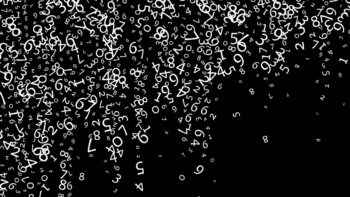
Quantum entanglement between two distant parties could be achieved using a non-entangled or classical information carrier. That is the conclusion of three independent teams of physicists that have done quantum-optical experiments backing up their claims.
Entanglement is a purely quantum-mechanical phenomenon that allows two particles, such as photons or electrons, to have a much closer relationship than is predicted by classical physics. Over the years, it has played a central role in creating in quantum-information systems such as quantum cryptography.
In most quantum-cryptography protocols two parties – normally referred to as Alice and Bob – wish to exchange information securely using a source that creates pairs of photons that are entangled in terms of their polarization. While any measurements Alice makes on the polarization of a succession of photons will be random, Bob’s results will be correlated to hers. This means that when compared on a photon-by-photon basis, both Alice and Bob’s photons are likely to have the same polarization.
An important challenge facing physicists creating such systems is “decoherence” – the destruction of entanglement that occurs when a quantum system interacts with its surroundings. To avoid this, researchers will normally try to keep an entangled system completely isolated from its environment, which can be quite a difficult task.
Separable states
Now, research published in three separate papers in Physical Review Letters suggests another surprising scheme for preserving entanglement in quantum cryptography – the use of an information carrier that is not itself entangled.
The experiments make use of separable states, which are quantum states that show certain correlations but are not entangled. These states were first defined in 1989 by physicists who were trying to understand the precise nature of entangled states. In this case, Alice polarizes a photon in a particular direction, say vertically, and then uses a classical communication method (such as a telephone) to tell Bob to polarize his photon in another direction, say horizontally. Both Alice and Bob’s photons are separable states and it was concluded that they are not entangled. However, in 2003 Toby Cubitt, then at the Max Planck Institute of Quantum Optics in Germany, and colleagues, calculated that, in some cases, separable states can be used to distribute entanglement.
Classically carried
Now, Alessandro Fedrizzi of the University of Queensland in Australia and colleagues have confirmed this in the lab. Their experiment begins with Alice and Bob sharing an entangled pair of photons (A and B). Then, this entanglement is destroyed by the introduction of other random states. This effectively makes A and B separable states because they still carry distinct correlations but are no longer entangled. A third photon, C, that is also a separable state serves as the carrier. Alice then sends A and C through a quantum gate. This causes A and B to interfere, thus creating another correlation (but not entanglement) between them. Then, C is sent along to Bob, who combines it with his B.
The surprising result is that A and B are entangled, even though C was never entangled with either of them. Rather, C is simply communicating the entanglement. The researchers also say that “distributing entanglement with separable carriers is resilient to noise and in some cases becomes the only way of distributing entanglement through noisy environments”.
Uncertain states
The second group to have done work along similar lines includes Christian Peuntinger of the Max Planck Institute for the Science of Light in Germany and colleagues. Peuntinger’s team applies the Heisenberg uncertainty relation between the amplitude and phase of the photons in two of its beams (A and C). Once again, C then carries the information of the entanglement to B but is itself never entangled with either A or B. The researchers say that their result “highlights the utility of quantum correlations beyond entanglement for the establishment of a fundamental quantum-information resource and verifies that its distribution by a dual classical and separable quantum communication is possible”.
Hidden states
Christina Vollmer, Roman Schnabel of the Albert Einstein Institute in Germany and colleagues are the third group to follow a very similar protocol. The only difference being that they begin with an entangled state that is hidden by mixing one part of the system with the external environment.
All three papers show that separable states that are not entangled can be used to carry entangled states. The technique could be particularly useful in quantum-communication systems involving more than two parties, while also serving as a tool to better understand entanglement and its responses to noise and classical communication.
All of three papers are published in Physical Review Letters.



